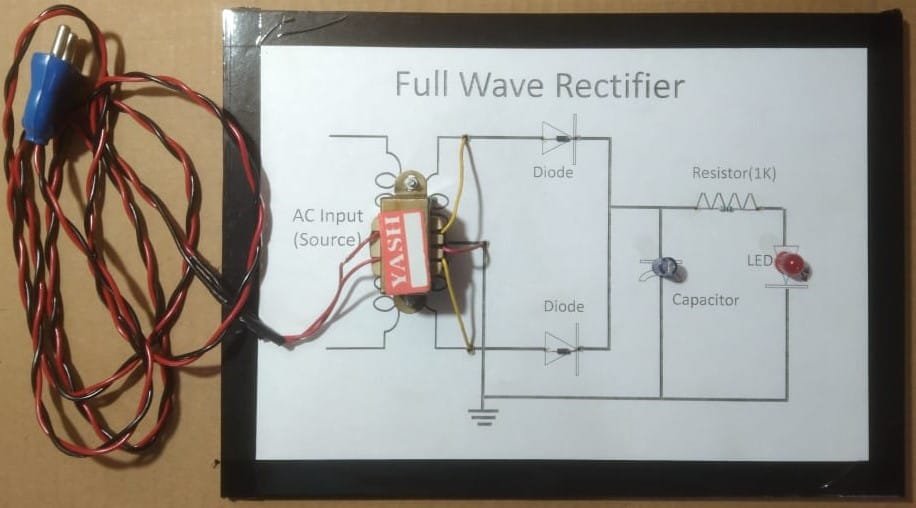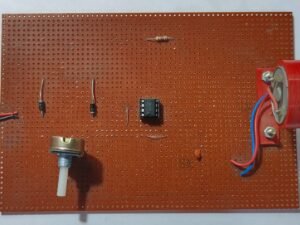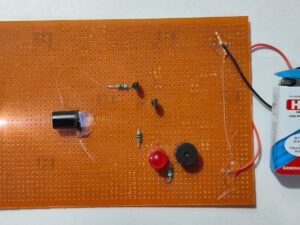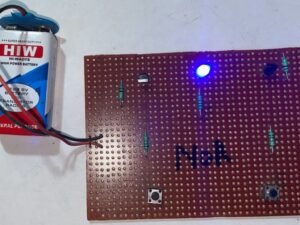Full Wave Rectifier
3 in stock
A Full Wave Rectifier converts alternating current (AC) into direct current (DC) by utilizing both halves of the AC waveform. Using a transformer and diodes in a bridge or center-tap configuration, it ensures efficient conversion with reduced power loss. This project is fundamental for learning power supply and rectification techniques.
₹442.50 ₹767.00 (Incl. GST)
3 in stock
Full Wave Rectifier
A full-wave rectifier is an electronic circuit that converts the entire cycle of alternating current (AC) into direct current (DC). Unlike half-wave rectifiers, which utilize only one half of the AC cycle, full-wave rectifiers are more efficient and provide a smoother DC output.
Components Used:
- Transformer: Steps down the high AC voltage to a lower, manageable level suitable for rectification.
- Diodes: In a bridge configuration, four diodes are arranged to allow current flow during both halves of the AC cycle, ensuring full-wave rectification.
- Resistor: Limits the current flow within the circuit, protecting components from potential damage due to excessive current.
- Capacitor: Smooths the pulsating DC output by filtering out voltage ripples, resulting in a more stable DC voltage.
- LED (Light Emitting Diode): Acts as an indicator, illuminating when current flows through the circuit, thereby confirming the presence of output voltage.
Working Principle:
In a bridge rectifier configuration, during the positive half-cycle of the AC input, two diodes become forward-biased, allowing current to pass through the load resistor. During the negative half-cycle, the other two diodes conduct, ensuring that current continues to flow in the same direction through the load. This process results in both halves of the AC waveform being utilized, producing a pulsating DC output. The capacitor then filters this output, reducing ripples and providing a smoother DC voltage. The LED serves as a visual indicator of the rectifier’s operation.
Applications:
- Power Supply Circuits: Provides DC voltage for electronic devices and appliances.
- Radio Signal Demodulation: Extracts audio signals from modulated radio frequencies.
- Battery Charging Circuits: Converts AC to DC for charging batteries.
Advantages:
- Higher Efficiency: Utilizes both halves of the AC cycle, resulting in improved efficiency compared to half-wave rectifiers.
- Reduced Ripple Factor: Produces a smoother DC output with fewer ripples, reducing the need for extensive filtering.
- Higher Output Voltage: Delivers a higher average DC output voltage, making it suitable for a wider range of applications.
Limitations:
- Complexity: Requires more components, such as multiple diodes and a center-tapped transformer or a bridge configuration, increasing circuit complexity.
- Cost: The additional components and more complex transformer design can lead to higher costs compared to half-wave rectifiers.
Conclusion:
Full-wave rectifiers are essential in converting AC to DC efficiently, making them integral components in power supplies and various electronic applications. Their ability to utilize the entire AC waveform results in higher efficiency and a smoother DC output. Despite the increased complexity and cost, the advantages they offer make them a preferred choice in many scenarios requiring reliable DC power conversion.





